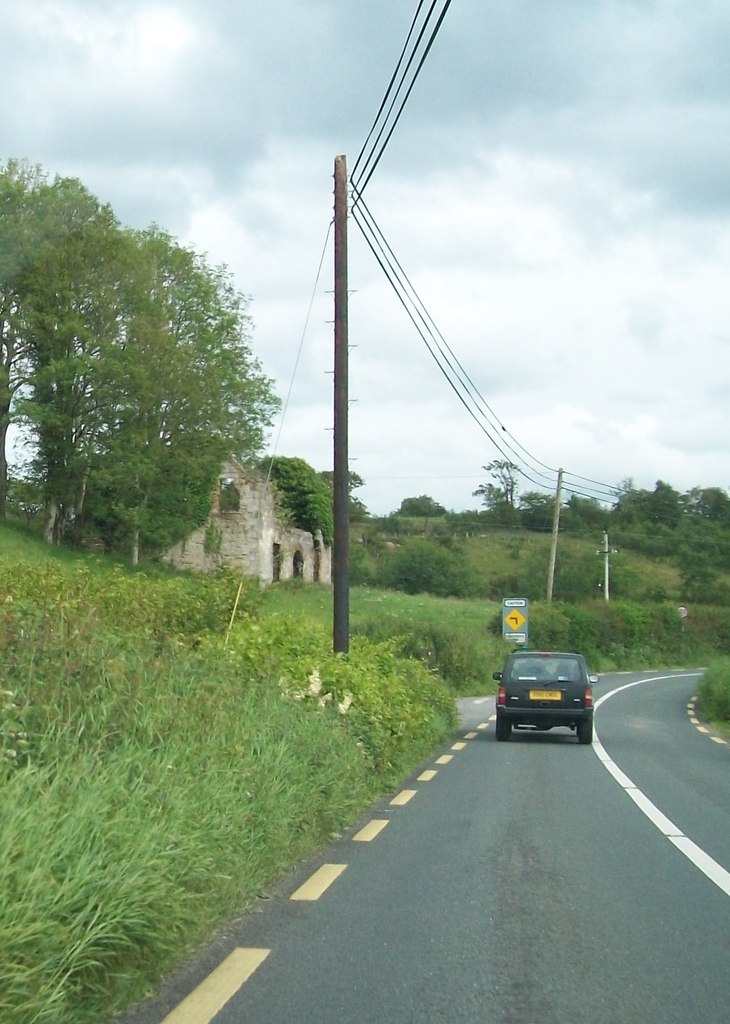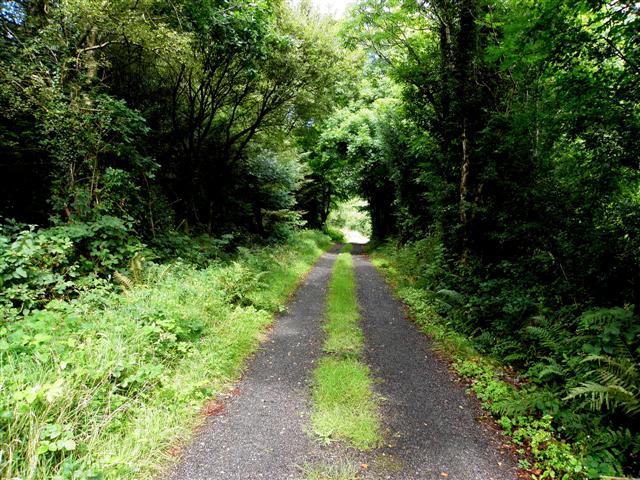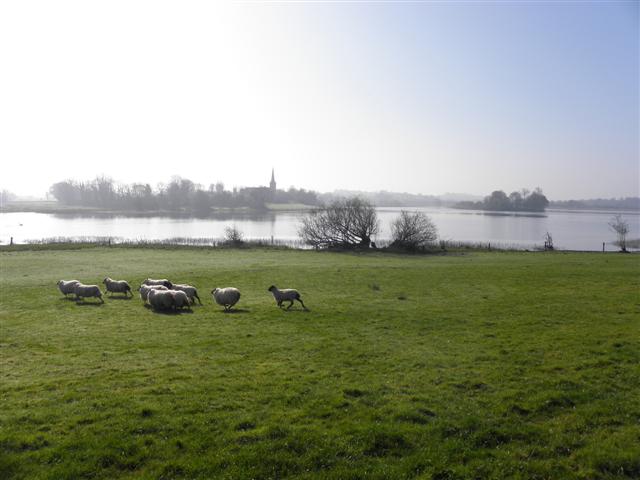|
Killyneary
Killyneary () is a townland in the civil parish of Templeport, County Cavan, Ireland. It lies in the Roman Catholic parish of Templeport and barony of Tullyhaw. Geography Killyneary is bounded on the north by Brackley, Templeport townland, on the west by Derrymony townland, on the south by Erraran and Bawnboy townlands and on the east by Carrick East townland. Its chief geographical features are Brackley Lough, forestry plantations, streams, dug wells and a spring well. Killyneary is traversed by the national secondary N87 road (Ireland), minor roads and rural lanes. The townland covers 152 statute acres. History In medieval times the McGovern barony of Tullyhaw was divided into economic taxation areas called ballibetoes, from the Irish ''Baile Biataigh'' (Anglicized as 'Ballybetagh'), meaning 'A Provisioner's Town or Settlement'. The original purpose was to enable the farmer, who controlled the baile, to provide hospitality for those who needed it, such as poor people and tr ... [...More Info...] [...Related Items...] OR: [Wikipedia] [Google] [Baidu] |
Killyneary
Killyneary () is a townland in the civil parish of Templeport, County Cavan, Ireland. It lies in the Roman Catholic parish of Templeport and barony of Tullyhaw. Geography Killyneary is bounded on the north by Brackley, Templeport townland, on the west by Derrymony townland, on the south by Erraran and Bawnboy townlands and on the east by Carrick East townland. Its chief geographical features are Brackley Lough, forestry plantations, streams, dug wells and a spring well. Killyneary is traversed by the national secondary N87 road (Ireland), minor roads and rural lanes. The townland covers 152 statute acres. History In medieval times the McGovern barony of Tullyhaw was divided into economic taxation areas called ballibetoes, from the Irish ''Baile Biataigh'' (Anglicized as 'Ballybetagh'), meaning 'A Provisioner's Town or Settlement'. The original purpose was to enable the farmer, who controlled the baile, to provide hospitality for those who needed it, such as poor people and tr ... [...More Info...] [...Related Items...] OR: [Wikipedia] [Google] [Baidu] |
Brackley, Templeport
Brackley () is a townland in the civil parish of Templeport, County Cavan, Ireland. It lies in the Roman Catholic parish of Templeport and barony of Tullyhaw. Geography Brackley is bounded on the north by Mullaghlea townland, on the west by Prospect, Corlough parish and Derrymony townlands, on the south by Killyneary, Carrick East and Gortnavreeghan townlands and on the east by Mullanacre Upper townland in Tomregan parish. Its chief geographical features are Slieve Rushen mountain on whose western slope it lies, Brackley Lough, mountain streams, mountain bogs, Brackley Wood, forestry plantations, stone quarries and dug wells. It forms part of the Slieve Rushen Bog Natural Heritage AreAn island in Brackley Lough is called the Baron's Island after a Baron de Trent who lived in Brackley House c.1850 and who built a studio on the island. Brackley is traversed by the regional N87 road (Ireland) and rural lanes. The townland covers 619 statute acres. History In medieval times t ... [...More Info...] [...Related Items...] OR: [Wikipedia] [Google] [Baidu] |
Carrick East
Carrick East () is a townland in the civil parish of Templeport, County Cavan, Ireland. It lies in the Roman Catholic parish of Templeport and barony of Tullyhaw. It is named Carrick East or Carrick Fisher to distinguish it from Carrick West or Carrick Hassard townland which is in Glangevlin parish. Geography Carrick East is bounded on the north by Brackley, Templeport townland, on the west by Killyneary townland, on the south by Bawnboy townland and on the east by Gortnavreeghan townland. Its chief geographical features are Slieve Rushen mountain on whose western slope it lies, mountain streams and forestry plantations. Carrick East is traversed by minor roads and rural lanes. The townland covers 127 statute acres. History In medieval times the McGovern barony of Tullyhaw was divided into economic taxation areas called ballibetoes, from the Irish ''Baile Biataigh'' (Anglicized as 'Ballybetagh'), meaning 'A Provisioner's Town or Settlement'. The original purpose was to enable ... [...More Info...] [...Related Items...] OR: [Wikipedia] [Google] [Baidu] |
Derrymony
Derrymony () is a townland in the civil parish of Templeport, County Cavan, Ireland. It lies in the Roman Catholic parish of Templeport and barony of Tullyhaw. Geography Derrymony is bounded on the north by Prospect, Corlough townland, on the west by Tirnawannagh townland in Corlough parish, on the south by Erraran townland and on the east by Killyneary and Brackley, Templeport townlands. Its chief geographical features are Brackley Lough, streams, forestry plantations and dug wells. Derrymony is traversed by minor public roads and rural lanes. The townland covers 254 statute acres. History In medieval times the McGovern barony of Tullyhaw was divided into economic taxation areas called ballibetoes, from the Irish ''Baile Biataigh'' (Anglicized as 'Ballybetagh'), meaning 'A Provisioner's Town or Settlement'. The original purpose was to enable the farmer, who controlled the baile, to provide hospitality for those who needed it, such as poor people and travellers. The bally ... [...More Info...] [...Related Items...] OR: [Wikipedia] [Google] [Baidu] |
Erraran
Erraran ( (i.e. Brackley Lake) is a townland in the civil parish of Templeport, County Cavan, Ireland. It lies in the Roman Catholic parish of Templeport and barony of Tullyhaw. Geography Erraran is bounded on the north by Derrymony and Killyneary townlands, on the west by Tirnawannagh and Gortnacargy townlands in Corlough parish, on the south by Newtown, Templeport and Kilsob townlands and on the east by Bawnboy townland. Its chief geographical features are Brackley Lough, Lough Namoyle (Loch na Maoile = The Lake of the Bare Hill), a stream and dug wells. Erraran is traversed by minor roads and rural lanes. The townland covers 155 statute acres. History In medieval times the McGovern barony of Tullyhaw was divided into economic taxation areas called ballibetoes, from the Irish ''Baile Biataigh'' (Anglicized as 'Ballybetagh'), meaning 'A Provisioner's Town or Settlement'. The original purpose was to enable the farmer, who controlled the baile, to provide hospitality for tho ... [...More Info...] [...Related Items...] OR: [Wikipedia] [Google] [Baidu] |
Templeport
Templeport () is a civil parish in the barony of Tullyhaw, County Cavan, Ireland. The chief towns in the parish are Bawnboy and Ballymagauran. The large Roman Catholic parish of Templeport containing 42,172 statute acres was split up in the 18th & 19th centuries into three new parishes, Templeport, Corlough and Glangevlin. Etymology The name of Templeport parish derives from the old townland of Templeport (which is now shortened to Port) which is the anglicisation of the Gaelic 'Teampall An Phoirt' ("The Church of the Port or Bank or Landing-Place"). The church referred to is the old church on St. Mogue's Island in the middle of Port Lake. This church fell into disuse in medieval times and a new church was built on the opposite shore of the lake. It was forfeited to Queen Elizabeth in 1590 and started use as a Protestant church in about 1610. It is very unlikely that the island church ever served as the parish church because there was only one boat available and it would have ... [...More Info...] [...Related Items...] OR: [Wikipedia] [Google] [Baidu] |
Ballyconnell
Ballyconnell () is a town in County Cavan, Ireland. It is situated on the N87 national secondary road at the junction of four townlands: Annagh, Cullyleenan, Doon (Tomregan) and Derryginny in the parish of Tomregan, Barony of Tullyhaw. Ballyconnell won the Irish Tidy Towns Competition in 1971 and was also the winner in 1975. According to the 2016 Census, the population of the town was then 1,105 persons, an increase of 4% on the previous 2011 census. Name The earliest surviving mention of the name Ballyconnell is an entry in the ''Annals of the Four Masters'' for the year 1323 A.D., which states "''Rory Mac Mahon, son of the Lord of Oriel, Melaghlin O'Seagannain, and Mac Muldoon, were slain by Cathal O'Rourke at Bel-atha-Chonaill''". Before being named Ballyconnell it was named ''Maigen'' which means 'The Little Plain' with the local ford called which means 'Ford of the Miners'. It was also named Gwyllymsbrook between 1660 and 1702 by its then owner, Thomas Gwyllym. Ballyc ... [...More Info...] [...Related Items...] OR: [Wikipedia] [Google] [Baidu] |
George Montgomery (MP)
George Leslie Montgomery (c. 1727 – March 1787) was an Irish politician. Montgomery sat as Member of Parliament (MP) for Strabane from 1765 to 1768. He purchased the seat from John McCausland of Strabane for £2,000 after the death of the incumbent Robert Lowry when a new writ was issued for the borough on 22 October 1765. Subsequently, he represented Cavan County in the Irish House of Commons from 1768 until his death in 1787. The Cavan poll result on 2 August 1768 was Maxwell 727, Montgomery 648, Pratt 570, Newburgh 402; The poll finally closed on 11 November 1768 and the final poll was Maxwell 927, Montgomery 739, Pratt 668, Newburgh 451. When the new Parliament met in 1769, Mervyn Pratt, the defeated candidate, petitioned against the election of Montgomery on grounds of bribery, corruption and undue influence. This petition was not finally determined owing to the premature prorogation of Parliament in December 1769, so Montgomery survived and continued to represent the ... [...More Info...] [...Related Items...] OR: [Wikipedia] [Google] [Baidu] |
Griffith's Valuation
Griffith's Valuation was a boundary and land valuation survey of Ireland completed in 1868. Griffith's background Richard John Griffith started to value land in Scotland, where he spent two years in 1806-1807 valuing terrain through the examination of its soils. He used 'the Scotch system of valuation' and it was a modified version of this that he introduced into Ireland when he assumed the position of Commissioner of Valuation. Tasks in Ireland In 1825 Griffith was appointed by the British Government to carry out a boundary survey of Ireland. He was to mark the boundaries of every county, barony, civil parish and townland in preparation for the first Ordnance Survey. He completed the boundary work in 1844. He was also called upon to assist in the preparation of a Parliamentary bill to provide for the general valuation of Ireland. This Act was passed in 1826, and he was appointed Commissioner of Valuation in 1827, but did not start work until 1830 when the new 6" maps, became av ... [...More Info...] [...Related Items...] OR: [Wikipedia] [Google] [Baidu] |
Belturbet
Belturbet (; ) is a town in County Cavan, Ireland. It lies on the N3 road, around north of Cavan town and from Dublin. It is also located around south of the border with Northern Ireland, between the counties of Cavan and Fermanagh, and from Enniskillen. History Belturbet's location is historically one of the best places for crossing the River Erne. It was the capital of the Kingdom of East Breifne which was an historic kingdom of Ireland roughly corresponding to County Cavan that existed from 1256 to 1607. When the Anglo-Normans tried to conquer Cavan in the early 13th century, Walter de Lacy built a motte-and-bailey on Turbet Island. The fort was probably made of wood and has not survived, although the steep mound of earth where it was built can still be seen. In the late 16th century the local O'Reilly chieftains built a castle opposite Turbot Island, but this has not survived either. As part of the Plantation of Ulster in the early 17th century, the lands around Bel ... [...More Info...] [...Related Items...] OR: [Wikipedia] [Google] [Baidu] |
Cavan County
County Cavan ( ; gle, Contae an Chabháin) is a county in Ireland. It is in the province of Ulster and is part of the Border Region. It is named after the town of Cavan and is based on the historic Gaelic territory of East Breffny (''Bréifne''). Cavan County Council is the local authority for the county, which had a population of 76,176 at the 2016 census. Geography Cavan borders six counties: Leitrim to the west, Fermanagh and Monaghan to the north, Meath to the south-east, Longford to the south-west and Westmeath to the south. Cavan shares a border with County Fermanagh in Northern Ireland. Cavan is the 19th largest of the 32 counties in area and the 25th largest by population. The county is part of the Northern and Western Region, a NUTS II area, and in that region, is part of the Border strategic planning area, a NUTS III entity. The county is characterised by drumlin countryside dotted with many lakes and hills. The north-western area of the county is sparsely po ... [...More Info...] [...Related Items...] OR: [Wikipedia] [Google] [Baidu] |
Census Of Ireland, 1901
A census is the procedure of systematically acquiring, recording and calculating information about the members of a given population. This term is used mostly in connection with national population and housing censuses; other common censuses include censuses of agriculture, traditional culture, business, supplies, and traffic censuses. The United Nations (UN) defines the essential features of population and housing censuses as "individual enumeration, universality within a defined territory, simultaneity and defined periodicity", and recommends that population censuses be taken at least every ten years. UN recommendations also cover census topics to be collected, official definitions, classifications and other useful information to co-ordinate international practices. The UN's Food and Agriculture Organization (FAO), in turn, defines the census of agriculture as "a statistical operation for collecting, processing and disseminating data on the structure of agriculture, covering th ... [...More Info...] [...Related Items...] OR: [Wikipedia] [Google] [Baidu] |







